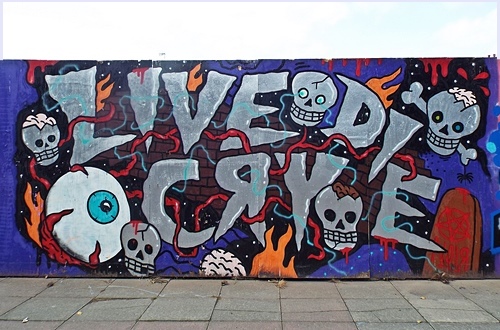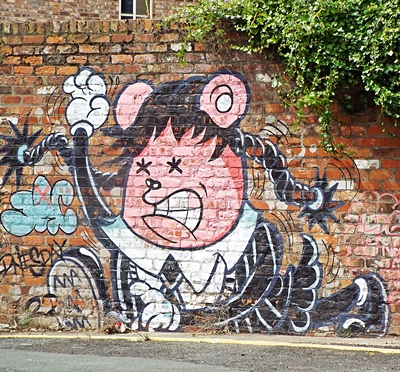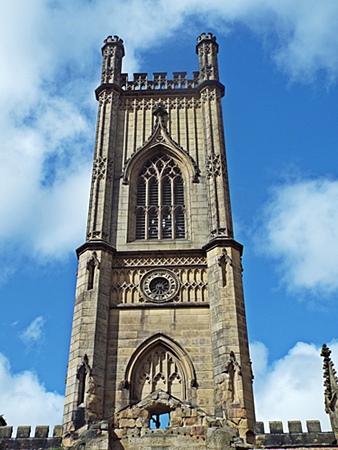Walking along Liverpool’s Princes Avenue last month on my way to Granby Winter Garden I couldn’t miss the huge mural of Nelson Mandela on the wall of a modern convention centre. Painted by local artist John Culshaw and standing around 50ft tall it was commissioned by Toxteth-based charity Mandela8 for the 2022 visit of Mandela’s oldest daughter and granddaughter to officially open the new Mandela memorial in Princes Park.

As I crossed the end of the street before Cairns Street I couldn’t help noticing a modern building covered in street art so after visiting the Winter Garden I went to take a look. A mixture of African culture and scenes of Liverpool it was very colourful, while the back wall of the building was covered in a second mural although being surrounded by steel fencing it was difficult to photograph.
Crossing Princes Avenue my intention was to head back towards the city centre along the tree-lined boulevard separating the avenue from Princes Road but spotting something in the distance down a side road sent me off in a totally different direction. On the side wall of a 3-storey narrow building and created by John Culshaw was a huge and very colourful mural of Ringo Starr though due to the proximity of nearby railings and a parked car it was impossible to photograph the whole thing face on.



The building, which featured on the front cover of Ringo’s first solo album Sentimental Journey, was formerly the Empress pub and apparently Ringo’s mother worked there as a barmaid in the days before he found fame and fortune, though as of August 2022 it’s been a Beatles-themed hotel. I didn’t know it at the time I was photographing the mural but I was actually only yards away from the house where Ringo lived from the age of six – not that I would have gone to look if I’d known as I’ve never been that fussed about the Beatles. Across the road was another John Culshaw mural which is supposed to have some connection to Ringo, although I’ve no idea what, then on the next corner was a more random amateur work which presumably had no connection at all.



































 Heading back to Lime Street station I found a colourful wall just inside St. John’s Shopping Centre while in a corner outside was a large octopus using its many tentacles to drink cocktails and play several different games. This apparently was the Boom Battle Bar and with crazy games like Beer Pong, Electric Darts, Bavarian Axe Throwing and Crazier Golf it sounded like quite a fun place to go to.
Heading back to Lime Street station I found a colourful wall just inside St. John’s Shopping Centre while in a corner outside was a large octopus using its many tentacles to drink cocktails and play several different games. This apparently was the Boom Battle Bar and with crazy games like Beer Pong, Electric Darts, Bavarian Axe Throwing and Crazier Golf it sounded like quite a fun place to go to.











































































































































































